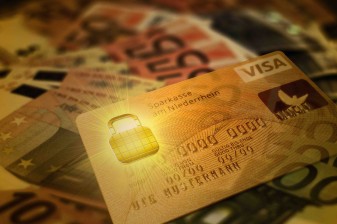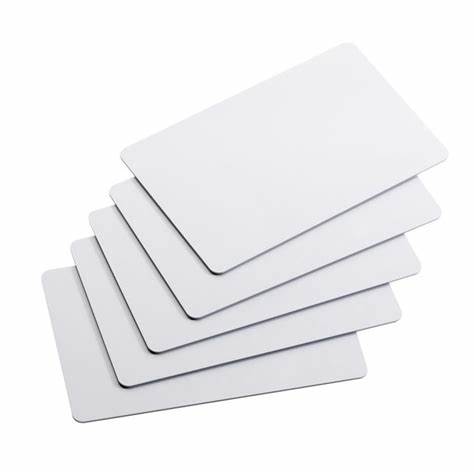Digital technologies are transforming how individuals connect, businesses operate and societies around the world function, but when it comes to trusted identity, physical cards continue to play a valued role in authenticating documents.
Everything begins with a trusted identity, which validates the identity of the person who is entitled to the benefits associated with a credential or to access a particular physical location or online portal, according to Entrust Datacard.
Identity is a set of characteristics that uniquely identifies a person in a defined environment. Examples include biometrics data, biographic data and relational data (work history, family, and addresses). A credential is a physical or logical binding of identity to attributes that grant privileges assigned by an authority (such as a smart card, paper document, badge, password or mobile device).
“Physical and digital identities will coexist for a very long time,” said Dan Good, vice president of Bureau Solutions at Entrust Datacard. Generationally speaking, baby boomers are experiencing a digital transformation and millennials, considered digital natives, are even more comfortable frequently using digital devices to multi-task and get access to what they want when they want it.
The combination of a physical card with a digital identity is powerful and provides multi-layered security. The personalization elements of the physical card, such as color or laser engraving, are a major factor in managing document security. These elements can be variable or fixed. Variable means they change with each document to make mass counterfeiting more difficult (personal data, photos and birthdates). Fixed elements are the same on each document and can include an embedded or preprinted security element in the card substrate or a protective overlay with holographic or secure Optically Variable Device (OVD) features.
Every card substrate has advantages and disadvantages when it comes to security, according to Entrust Datacard. Polyvinyl chloride (PVC) doesn’t cost a lot; is compatible with Direct-to-Card (D2T2), retransfer embossed and indent elements and can include RFID, IC and contactless capabilities. However, its durability is limited for high use and long card life and it’s primarily used for financial cards with an up to three to five year validity. It’s not environmentally friendly either.
Composite (PET/PVC) cards don’t cost much more than PVC cards. They are more durable than PVC cards and compatible with D2T2, retransfer printing and tactile elements, laminates and topcoat materials and can have RFID, IC and contactless capabilities. However, they can delaminate in use if the card manufacturer uses the wrong adhesives.
Polycarbonate (PC) cards are extremely durable, difficult to delaminate, compatible with smart card technology, and do not need overlays if they are only personalized with a laser, retransfer or a receptive layer for D2T2. However, they are typically more expensive, not as receptive to D2T2 printing and are typically personalized with monochrome laser technologies although new color laser technologies are available.
Other synthetics, such as Teslin, do not cost a lot, and are flexible and more durable than PVC. However, they suffer from reduced photo clarity, are easy to delaminate and are prone to human errors as they are produced manually and through an industrial process.
When it comes to personalization technologies, here are the advantages and disadvantages of each:
Dye sublimation color is a proven technology that ensures high-quality color printing for transfer and retransfer applications on a wide range of desktop and central issuance printers. However, the dyes need to be protected from image degradation from plasticizer or chemicals.
Resin or pigment inks are more stable than dyes and more resistant to UV fading. However, there are supply costs associated with them.
Inkjet printing has a low supply cost and the equipment is capable of high speed. However, image and print quality, depending on what substrates are used, must be considered. It also requires a UV-curing process.
Laser engraving produces high-resolution photo images and can help add various hard-to-alter security features to a card. There are no additional expenses for supplies, but the equipment and cards can cost more upfront.
Color laser printing is secure, difficult to alter and does not have added supply or management expenses. However, it produces low-resolution photo images and it’s not good for distributed card issuance. The equipment and cards are also typically more expensive.
Manufacturers also have to consider the benefits and challenges of using standard topcoats, high-durability topcoats or polyester laminates when it comes to card security.
Standard topcoats are 2-3 microns thick and cannot be removed intact, providing a high level of tamper evidence. They provide edge-to-edge protection, are visually appealing and can be manufactured to contain level one, level two and level three security features. However, standard topcoats do not provide robust abrasion and chemical resistance, are not very durable (up to three years), fall subject to dye migration problems and do not meet ISO 24789 (DL).
UV-cured topcoats also meet ISO 24789 (DL) and have better abrasion and chemical resistance than a standard topcoat.
Polyester laminates are best for abrasion and chemical resistance, are available in 1/2 mil and 1 mil, can incorporate UV blockers to protect against fading and can be manufactured with level one, two and three security OVD features. They meet ISO 24789 (DL & NID). However, the patch is not edge-to-edge and the laminates, while difficult to remove intact, may leave the card vulnerable to tampering and counterfeiting.
Entrust Datacard recommends implementing the Security at Time of Personalization (STOP) methodology, which utilizes variable data applied in the issuance process, to:
Inhibit alteration: Include variable information unique to the document, making it difficult to alter.
Deter counterfeiting: The value of a stolen substrate is limited when specialized knowledge and technology are used.
Decrease value: Raw materials have less value to counterfeiters and less of a chance of being stolen during transport and distribution.
Improve authentication: STOP includes overt and covert features that enable easy validation.
STOP variable security features include laser microprint, UV fluorescent ink, braille, tactile laser engraving, LaserTact and PersoCurve. Unique laser engraving security features include Forensic LaserShadow, secure indent, LaserFlex, MLI/CLI and registered color plus laser.
In conclusion, new digital payment and ID applications could propose long-term threats to physical cards. However, Entrust Datacard believes the physical card will co-exist with digital technologies to provide secure identification for many years to come as a result of:
Consumers being conditioned to using plastic cards at points-of-sale for the last 50 years.
Mobile wallets struggling to get meaningful traction due to the required shift in human behavior.
Investments being made to improve the form factors of physical cards by both the card networks and issuers.
Therefore, for at least the near future, societies around the globe will continue to map the physical and digital together through smartcard applications for secure payments and identification. As long as digital immigrants are still alive and breathing, the two realms will coexist. However, Entrust Datacard warns we must not put it past the digital natives to change the way people make payments and securely identify themselves beyond 2050.
(source: ICMA https://icma.com/physical-credentials-still-necessary-in-the-age-of-digital-transformation/)


